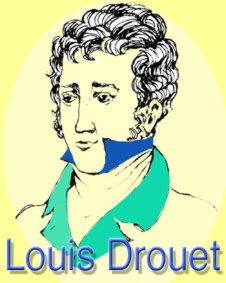 Louis Droüet (1792-1873)
Louis Droüet (1792-1873)
Born in Amsterdam, Holland, in 1792, the son of a French refugee barber.He taught himself to play the flute (small model) from the age of four, having been given a flute by a customer of his father`s, and appeared at the Paris Conservatoire when aged only seven, showing great talent.He made several successful tours and was appointed, at the age of sixteen, as first flute and teacher to King Louis of Holland, the brother of Napoleon, who presented Drouet with a glass flute set with precious stones. In 1811, the Emperor invited Drouet to Paris, where he was overwhelmed with honours and gifis, and was even exempted from conscription. He came to England in 1817, where he won enormous acclaim, and opened a flute making business in 1818, but that was not a success, closmg one year later. He left England to start a professional tour of Europe, and won much fame whilst making his fortune. He returned to England in 1829, accompanied by his great friend Felix Mendelssohn, and three years later was in Paris. In 1840, he was appointed Kapelmeister to the Duke of Saxe-Coburg-Gotha. in whose service he remained for fifteen years. He appeared again in England from 1814-1842, and performed by Royal Command betore Queen Victoria and Prince Albert (q.v.) (the latter was an accomplished flautist himself). Drouet visited America in 1854, and died on the 30th of September, 1873, at Berne. His best known pupils were Gordon, c 1810 and W. Popp c 1850 (q.v.v.). He was tall and thin with red hair. Of his performance, it is said that he was a master of double-tonguing and was termed by many "The Paganini of the Flute". Drouet used the old model eight-key flute all his professional life, advocating and using an almost square mouth tone-hole. He was a prolific composer for the flute and his works include: ten concerti, over twenty duets; trios, solos and fantasias. His `Etudes` run to three hundred and thirty-one pages. He also published a "Méthode Pour la Flute" in Anvers, France, in 1827 which was published in London in the same year and in New York in about 1830.